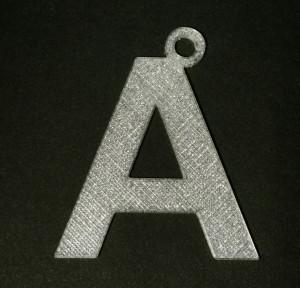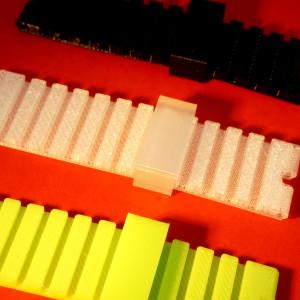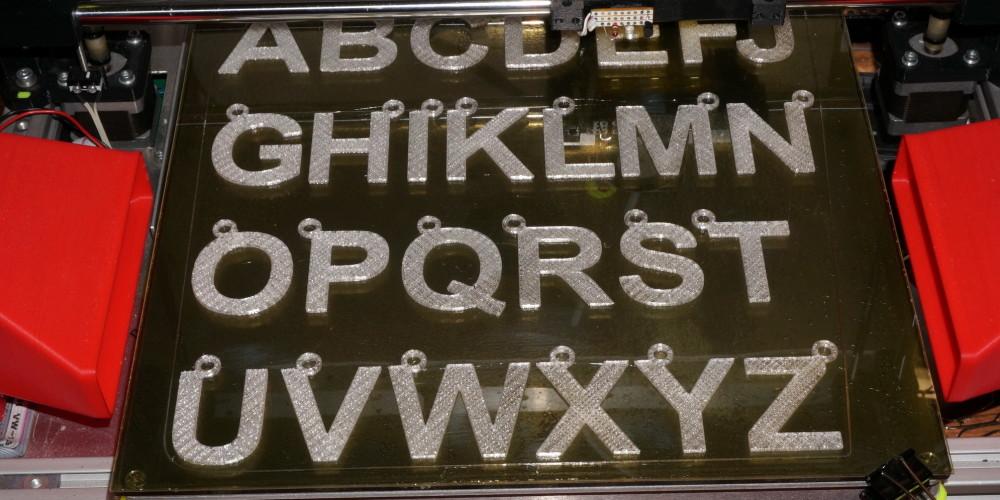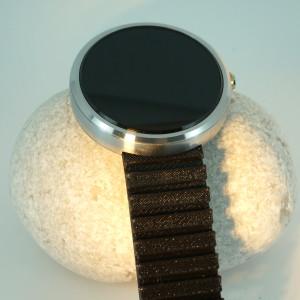 London-based inventor and industrial designer Otto Souta was no stranger to advanced technology when he started experimenting with 3D printing four years ago. He had spent years working for OTAMAT, an avionics, lighting and photography parts and accessory manufacturer where he designed equipment used by industries as diverse as aircraft manufacturers and photographers. A few years ago Souta decided to shift his focus to the 3D printing industry, where he experimented with technology, printing methods and materials. It was while he was researching and developing his own 3D printer and line of 3D printing accessories that Souta stumbled on a printing process that combined physics with a unique geometric structure to make standard 3D printing materials shimmer as if they were made from gemstones.
London-based inventor and industrial designer Otto Souta was no stranger to advanced technology when he started experimenting with 3D printing four years ago. He had spent years working for OTAMAT, an avionics, lighting and photography parts and accessory manufacturer where he designed equipment used by industries as diverse as aircraft manufacturers and photographers. A few years ago Souta decided to shift his focus to the 3D printing industry, where he experimented with technology, printing methods and materials. It was while he was researching and developing his own 3D printer and line of 3D printing accessories that Souta stumbled on a printing process that combined physics with a unique geometric structure to make standard 3D printing materials shimmer as if they were made from gemstones.
 Souta has spent most of his time learning how 3D printing technology works, and building his own machines to see if he could improve on some of the standard industry designs. He’s currently on his fourth version of his own custom 3D printer that he had actually considered marketing and selling at one point. Though he opted out of putting yet another 3D printer on the market, he continued to improve on his design, and the current generation of Souta’s printer includes features ranging from a heated bed, all-metal direct drive extruders and a sizable cube-shaped printing envelope measuring 9.8 x 9.8 x 9.8 inches (250 x 250 x 250 mm).
Souta has spent most of his time learning how 3D printing technology works, and building his own machines to see if he could improve on some of the standard industry designs. He’s currently on his fourth version of his own custom 3D printer that he had actually considered marketing and selling at one point. Though he opted out of putting yet another 3D printer on the market, he continued to improve on his design, and the current generation of Souta’s printer includes features ranging from a heated bed, all-metal direct drive extruders and a sizable cube-shaped printing envelope measuring 9.8 x 9.8 x 9.8 inches (250 x 250 x 250 mm).
While he had initially started 3D printing for fun, Souta is now actually making a living with it by offering his years of design experience for some contracted design and fabrication work. But he is also looking to use 3D printing to develop his own line of 3D printed accessories, printer upgrades and equipment. While testing out different 3D printing processes, Souta inadvertently applied a physics phenomenon known as Total Internal Reflection (TIR) to his 3D printed parts and noticed that the result was a shimmering part that looked like no 3D printing finish he had ever seen before.
TIR is the effect of light being reflected and refracted through material that is denser than another, like light being shined through water. While the phenomenon was initially unintended, Souta believed that it had obvious applications for costume jewelry so he began working with it until he had created the ideal structure to reflect the maximum amount of light. In order to verify that the TIR printing process would work, Souta designed a series of plastic letters and watch straps to prove it would have usable applications.
By 3D printing parts that have an internal structure containing thousands of these reflective surfaces, ordinary plastic will give off dramatically magnified amounts of light. The resulting bling effect is similar to a high-quality gemstone such as a diamond that has been expertly cut. The reflective structure is made by crossing strands of filament over each other in specific patterns that will exploit the contrasting light refraction rates between plastic and the gaps within the structure.
 Souta says that the method would be ideal for large, complex costume jewelry applications due to the durability of 3D printing materials. Additionally, due to the internal structures, any objects printed using his technique are extremely lightweight. And because the reflective structures are actually inside of the 3D printed parts, the glimmering effect will not diminish or become duller as the part ages like an artificial finish or plating effect.
Souta says that the method would be ideal for large, complex costume jewelry applications due to the durability of 3D printing materials. Additionally, due to the internal structures, any objects printed using his technique are extremely lightweight. And because the reflective structures are actually inside of the 3D printed parts, the glimmering effect will not diminish or become duller as the part ages like an artificial finish or plating effect.
The process will work with just about any commercially available filaments, including both rigid plastics and flexible materials. However Souta says that it seems to work best with clear or translucent colored filaments. So far Souta said that he has been unable to identify anyone else documenting this 3D printing application before, so he is looking into options for selling or licensing his printing technique to any interested jewelry designers. Let’s hear your thoughts on this technique in the 3D Printed Bling forum on 3DPB.com.
Subscribe to Our Email Newsletter
Stay up-to-date on all the latest news from the 3D printing industry and receive information and offers from third party vendors.
You May Also Like
3D Printing Unpeeled: New Arkema Material for HP, Saddle and Macro MEMS
A new Arkema material for MJF is said to reduce costs per part by up to 25% and have an 85% reusability ratio. HP 3D HR PA 12 S has been...
3D Printing News Briefs, January 20, 2024: FDM, LPBF, Underwater 3D Printer, Racing, & More
We’re starting off with a process certification in today’s 3D Printing News Briefs, and then moving on to research about solute trapping, laser powder bed fusion, and then moving on...
3D Printing Webinar and Event Roundup: December 3, 2023
We’ve got plenty of events and webinars coming up for you this week! Quickparts is having a Manufacturing Roadshow, America Makes is holding a Member Town Hall, Stratafest makes two...
Formnext 2023 Day Three: Slam Dunk
I’m high—high on trade show. I’ve met numerous new faces and reconnected with old friends, creating an absolutely wonderful atmosphere. The excitement is palpable over several emerging developments. The high...


































